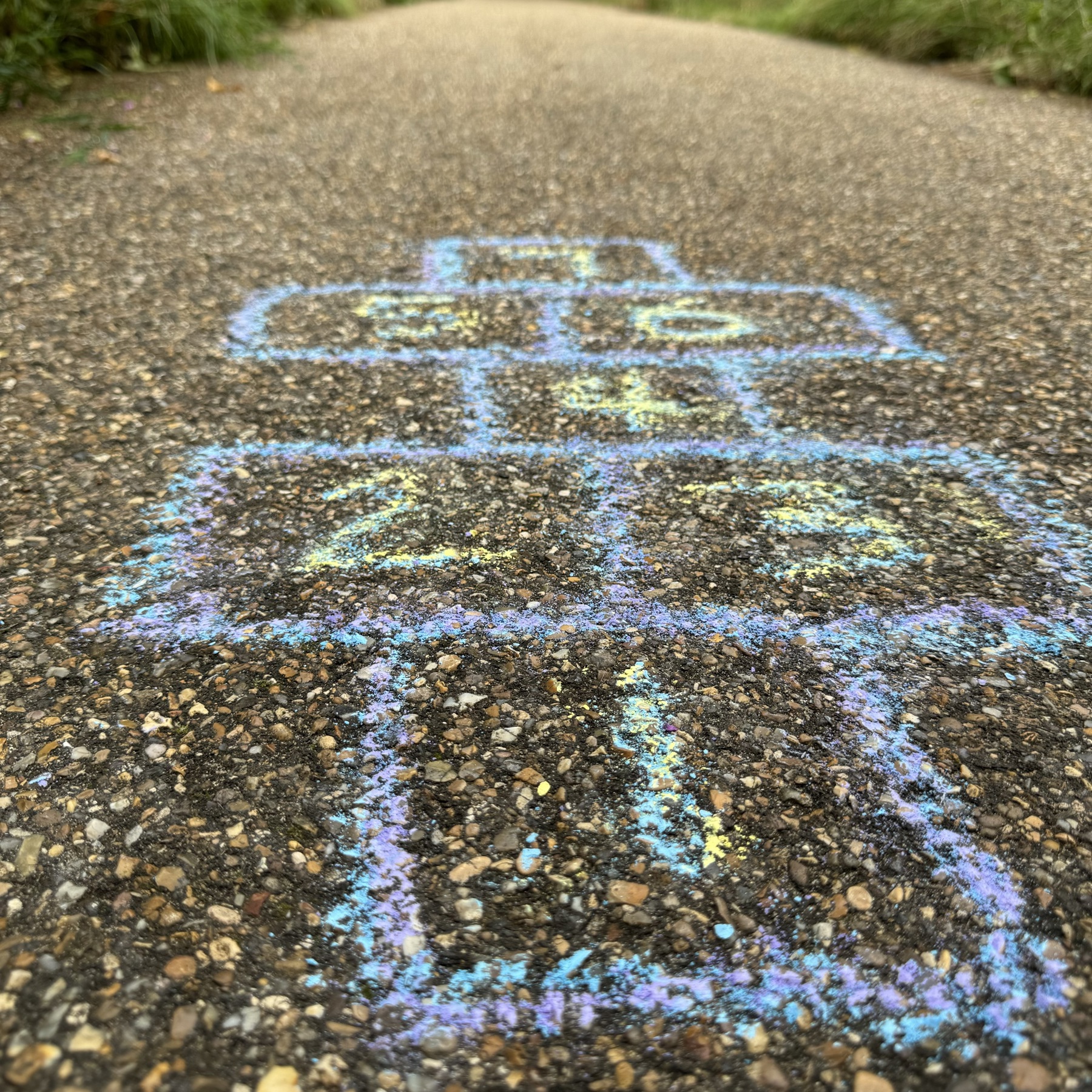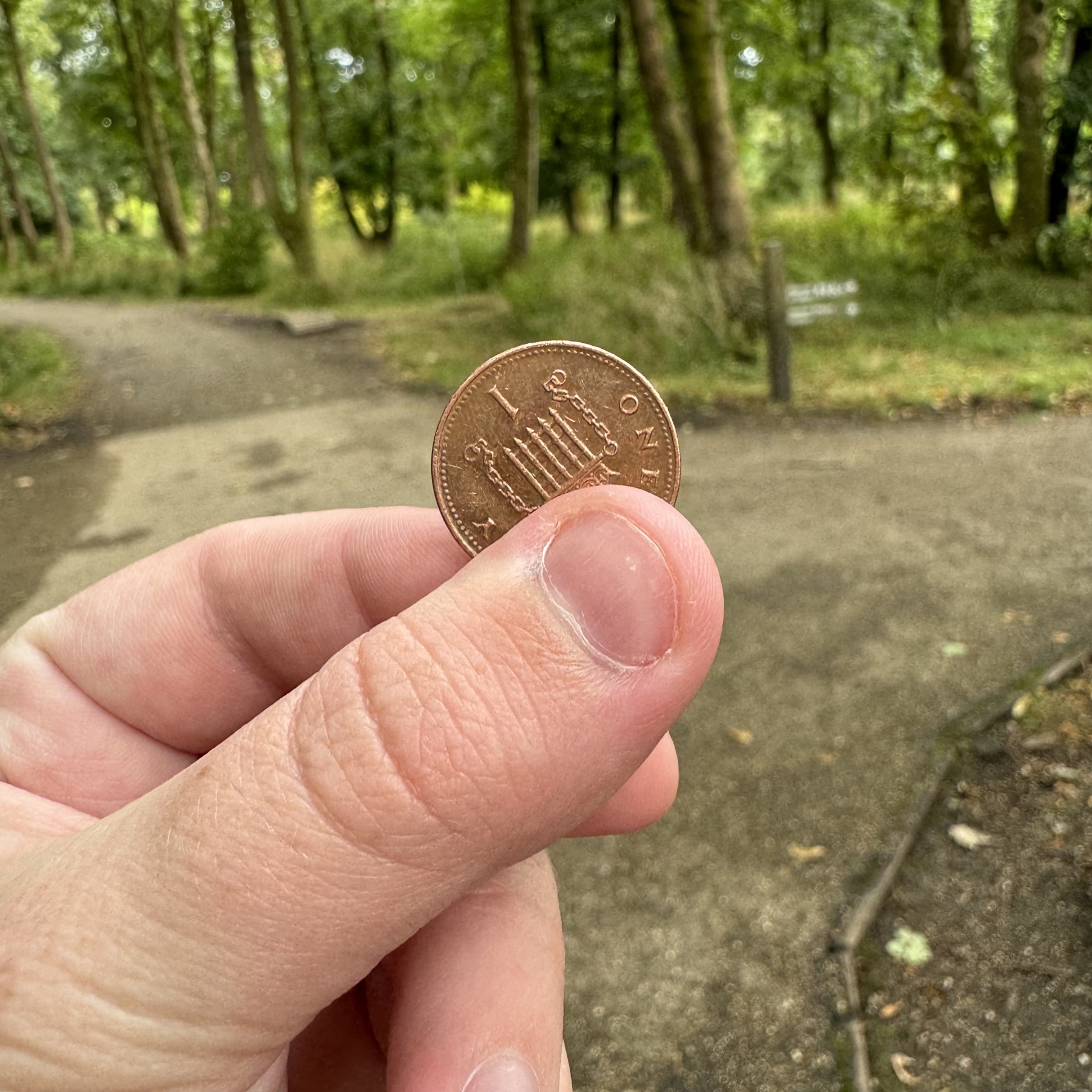21 outdoor activities to do in a town or city
Urban areas offer a brilliant backdrop for adventures, and with a little creativity, you can turn any street corner into a space for learning, fun, and exploration. So, grab your chalk, camera, or coin, and let the urban exploration begin with these 21 activity ideas to help you explore your town or city.

Hopscotch is a timeless game that never fails to entertain. Take this classic a step further by creating themed hopscotch games. You could make it longer, draw the board in a different shape, such as a circle instead of a straight line, or leave bigger gaps between the squares for people to jump across. You could also have a silly hopscotch version, where certain numbers mean you have to do silly challenges, such as singing a nursery rhyme backwards.
Get out the chalks and start drawing. You could even try making your own chalk. You could all draw images around a certain theme, write poems or positive messages, draw mazes and obstacle courses, or just let people have fun making the ground more colourful!
Give each participant a camera or smartphone, and set out on a mission to find objects or scenes that represent each letter of the alphabet. From ‘A’ for an archway to ‘Z’ for a zebra crossing, see if you can fill every letter with something you spot.
To make it harder, you could try to spot the letters, or the shape of the letters, in the environment, such as on signs or road markings, then spell out a word with the letters you’ve found!
Parks and green spaces within the city are perfect for gathering natural materials, such as sticks. Once collected, challenge the group to create sculptures or structures using just the sticks, string or elastic bands, and any other natural materials they can find. This could range from simple shapes to more complex designs, such as animals.
Even in the heart of a city, you can find bits of nature peeking through. Gather leaves, flowers, pebbles, and twigs, and make nature faces on the ground. Each face could represent different emotions, or they could be modelled after famous figures.
Why not use them to play Guess Who and see if you can work out who each person made? You may need to ask some questions to help you!
Collect various types of leaves in different shapes, colours and sizes. You can then use them to create animals or even invent new creatures. Try making our leafy hedgehog, leaf crown, leaf squirrel or leaf art.
You could also practice identify different types of leaves. Use our leaf spotter wheel, Guess the tree game or tree switch game to help you.
A penny hike is where you flip a coin at every intersection: heads means turn right, tails means turn left. As you wander, make sure to observe their surroundings or find interesting landmarks. You could even try to follow along with where you on a map to practice map-reading.
A journey stick is a traditional way of recording a journey by attaching objects found along the way to a stick, either with an elastic band or string. During a walk, collect items that represent different parts of the journey, such as a feather from a park, a ribbon from a local event, or a unique leaf. Later, you can share their stories using the stick as a visual aid, helping to develop storytelling and observational skills.
Plan and run a scavenger hunt that lets you discover unique aspects of the town or city.
For older groups, you could create a list of items to find or have a list tasks to complete, such as answering a question by going to a landmark. You may also want to involve map-reading or using what3words to practice navigation.
For younger groups, you could try a road sign safari treasure hunt or run a colour scavenger hunt. Each person could be given colour and have to find things that match their colour - or everyone could try to look for items to make up a rainbow.
If you want to do a bigger scavenger hunt, you could even try running a local Scout event, such as a Monopoly Run, outdoor escape room or treasure trail.
On a sunny day, head out to somewhere where you can make lots of shadows. Use chalk or pens and papers, then trace the shadows of various objects, from trees to benches to each other.
As the sun moves, you could observe how the shadows change, showing how the Earth moves around the sun and time.
After tracing, you could use the shapes to create unique abstract art pieces.
Take a walking tour of your city’s urban street art - you might even spot a Banksy. You could take photos of the art or talk about the different styles and messages behind the work.
Afterwards, on paper, you could recreate let the urban art you saw using paints and felt tips, or let people design their own.
Remember, in most countries, including in the UK, graffiti without permission is illegal and considered vandalism. Street art can be done legally with the permission of property owners or as part of a community art project.
Search for birds, insects, and small mammals that live in the city or town. You could use bingo sheets to see who can spot the most wildlife or use your senses to see what wildlife you can hear. Why not wake up early and go bird-spotting?
Use some free spotting sheet guides to help you know what to look for. You can get some from the RSPB, Woodland Trust, Wildlife Trust and WWF, either to print at home or use on a phone. You could look more closely at what you find with with magnifying glasses too.
Always be careful and to always handle wildlife gently, making sure to return it to where you found it.
Go for a walk around the local area and, at different stops, read a page or two of a storybook. It’s a great way to bring a story to life. For example, you could try ‘We’re going on a bear hunt’ in the local park and hide a bear for your group to find.
Geocaching involves finding hidden ‘caches’ using GPS coordinates, so go geocaching around the town or city. It’s a modern-day treasure hunt that teaches navigation skills, problem-solving and patience. You can even encourage people to create their own cache for others to find or try the geocaching badge.
After a rainy day, put on some wellies and go puddle jumping. Encourage them to observe the ripples, reflections, and even small creatures they might find in the puddles, then see who can make the biggest splash!
Make a tinfoil river, or use a piece of rain guttering to make a river, then make some small boats to race.
You could make them from sticks and leaves, rubber ducks, kitchen sponges or paper boats, then decorate the boats before racing them. Remember to have a start and finish line, and stay safe when running activities near water.
Practice some tracking symbols, then put together a short treasure hunt and get groups to follow the symbols to find a small prize. You could make the symbols out of sticks, pebbles or chalk.
Get outside and fly some kites, whether it’s in the park or the playground. Why not trying making your own kites too?
See who can make rockets fly the highest in our rocket activity.
Go litterpicking and help to clean up your local town or city. Always wear gloves, use litterpickers and wash your hands afterwards.
Pizza box solar ovens are quick and easy to make.
To make a pizza box solar oven, start by closing a clean pizza box and drawing a square on the lid, about 2.5cm from the edges.
An adult should carefully cut along three sides of the square to create a flap that can be lifted open. Cover the inner side of this flap with aluminum foil, shiny side out, to reflect sunlight into the box.
Next, open the flap and tape a piece of clingfilm over the opening, making sure it's tight and smooth to help trap heat inside.
Cover the bottom of the box with black paper, as this helps to absorb heat. For better insulation, you can add rolled-up newspapers around the inside edges of the box.
Next, close the box and prop open the foil-covered flap with a bamboo skewer. Place the solar oven outside in direct sunlight, with the flap angled to capture as much light as possible.
Inside the oven, place a chunk of chocolate and a marshmallow on top of a biscuit, then place this on top of the black paper and let it cook for 30 minutes to an hour, depending on the sun’s intensity and the type of food being prepared.
The oven can get very hot, so always make sure to be careful when placing and removing the food items. Always wear and use protective equipment, such as tongs or heatproof gloves. When removing the items off the oven, place them onto a heatproof plate and make sure they’ve plenty of time to cool. Make sure you’ve access to a bucket of water, fire-safety equipment and a first aid kit, including for burns.
Always supervise young people appropriately when they’re using scissors or sharp objects. Store all sharp objects securely, out of the reach of young people.

Staying safe
All activities in Scouts must be safely managed. It’s important to choose an appropriate, accessible outdoor area. You may need to think about avoiding steps, being close to public transport, or steep gradients or including frequent breaks. You must have permission to use the location.
You must complete a thorough risk assessment and take appropriate steps to reduce risk. You should use our safety checklist to help you plan and risk assess your activity. Take a look at our guidance to help you carry out your risk assessment, including examples.
Always get approval for the activity, and have suitable supervision and an InTouch process. You may need some parents and carers to help.
Always check the weather forecast, tide times and sunset before running the activity.
You should inform parents and carers of any change in venue, days or times, and have a suitable drop-off/collection point. You could use our activity information forms, and always make sure everyone knows what people should bring and wear.
Before playing a game, there are some things you need to do to help keep everybody safe and make sure everyone can be included. Take a look at our advice on running active games safely and accessibly.